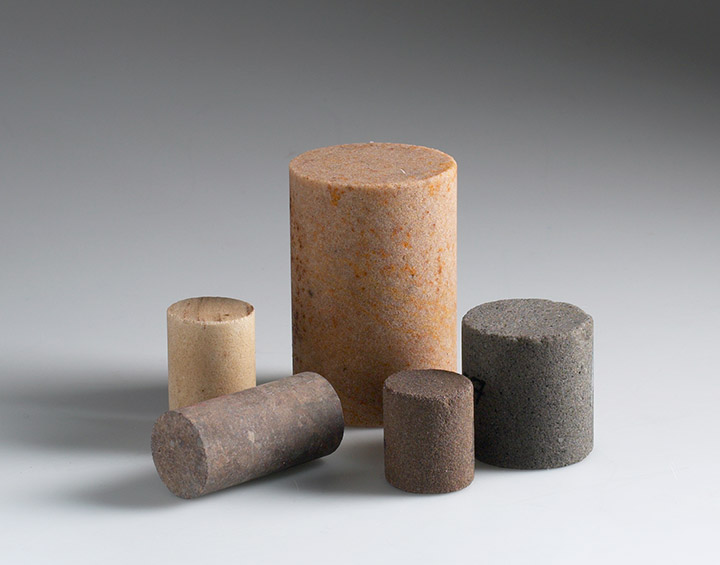Products
Applications
Learning
 Part of the Oxford Instruments Group
Part of the Oxford Instruments Group

What role can Nuclear Magnetic Resonance (NMR) play in core analysis and how does it complement other popular analytical techniques?
If you work in petrophysics or geoscience, you’ll be more than aware of the importance of accurate rock core analysis including defining porosity. You’ll probably also be familiar with some of the more mainstream methods of performing the analysis. In this article, we’ll introduce you to a different way to undertake core analysis: Nuclear Magnetic Resonance (NMR), which allows multiple parameters to be measured quickly and accurately without an extensive knowledge of specific NMR techniques.
Complementing existing analysis
It is important to stress that we’re not suggesting NMR as an alternative to mercury porosimetry or resistivity measurements; instead it complements these methods. Applying petrophysics to rock samples is an imprecise science so the more measurements we can add to the mix, the better the results will be.
Mercury porosimetry can give you information about the shapes of the pores and the pore distribution, resistivity can help with fluid type, and NMR can provide information about both pores themselves and fluid. It focuses on fluid behaviour inside the rock in a way that no other technique can manage. It gives visibility of the total fluid volume and determines how much fluid will flow through the rock. This means when you break a well, you know exactly how much oil will flow and how much will be bound by capillary pressure.
Simple operation; global use
Moreover, NMR is an incredibly simple and intuitive process that requires little in the way of specialist training. Here at Oxford Instruments, we have designed the user-friendly GeoSpec range of rock core analysers, which provide petrophysicists, geophysicists, geologists and reservoir engineers with critically important information on the nature and behaviour of fluids in core samples.
GeoSpec is the industry standard NMR rock core analyser, with installations in almost every major oil producer and SCAL laboratory world-wide. Three models are available operating at 2, 12 and 20MHz. The GeoSpec 2MHz model is the industry standard for routine measurements of relaxation distributions, allowing the prediction of basic petrophysical parameters such as porosity, free and bound fluid determinations and T2 cut-off.
GeoSpec enables characterization of the reservoir properties of rocks in new and innovative ways and delivers answers in petrophysical terms, so the user needn’t be an expert in the underlying NMR techniques. It is also designed specifically to analyse tightly-bound rocks such as shales, as well as conventional sandstones and carbonates.
Coming soon
Bear in mind that NMR can also provide much more data, such as fluid typing, capillary pressure and fluid distribution. We’ll take a look at these in a future article. We’ll also explore NMR’s potential to ascertain permeability, capillary pressure and oil/water or gas/water contents.
If you are working in a rock core analysis lab, NMR ought to be part of your toolkit because oil companies will soon expect it as a de facto part of your package. It provides a valuable string for your analytical bow and enable you to really probe into the behaviour and volume of fluids.
To arrange a demo and see how our innovative measurement solutions could improve your operations, get in touch with a member of our expert team.
Learn more about GeoSpec Learn more about Rock Core Analysis
